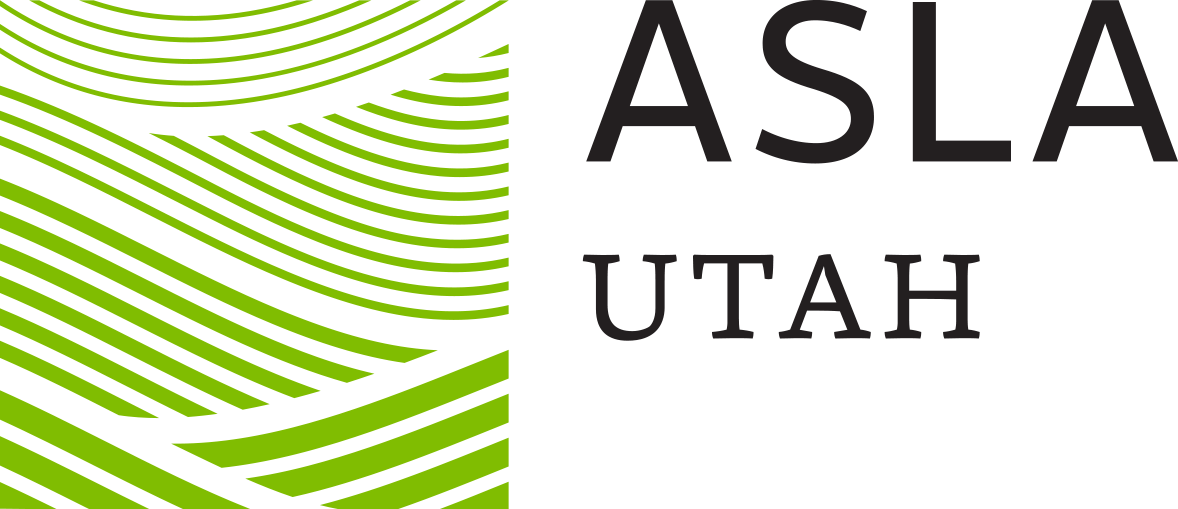MERIT AWARD
Represents superior accomplishment in the profession of landscape architecture.
FAIRMONT PARK COMMUNITY FISHING POND
“Extensive partnerships and collaborations! Great example of elevating a basic project to community value and habitat restoration, including wetlands and riparian environments.”











PROJECT STATEMENT
The Fairmont Park Community Fishing Pond is a popular urban fishery and habitat restoration project located in the historic Fairmont Park within the heart of Salt Lake City’s Sugarhouse neighborhood. Salt Lake City’s Parks and Public Lands partnered with the Utah Division of Wildlife Resources to collaborate on and fund this unique project that started as a grass-roots local citizen initiated project. Originally envisioned as a project to stabilize a 35-year old man-made water feature and to rebuild some sidewalks, the project evolved during concept development by the design team into creating an interactive natural fishing pond and habitat restoration project. Landscape Architects joined with resource scientists on the design team to explore and create appropriate habitat design features. The project resulted in daylighting more than 200 feet of natural spring fed stream channels, creating over 3,300 square feet of emergent wetlands, establishing native upland and riparian habitats, and constructing a naturally functioning fishing pond by excavating the existing shallow water feature to provide fish habitat appropriate for stocking and over-wintering fish.
PROJECT NARRATIVE
The Fairmont Park Community Fishing Pond project site consists of approximately two acres of developed park space in the northeastern portion of the historic Fairmont Park. Situated between Salt Lake County’s Aquatic Center and the non-profit Youth City buildings, a former man-made 0.5 acre size shallow water feature was converted into a spring-fed naturally functioning community fishing pond that can hold and support a variety of both warm and cold water fishes. Located within a vibrant and growing portion of Salt Lake City’s Sugarhouse Neighborhood, this unique development opportunity brought together both design and scientific experts to recreate naturally functioning fish and wildlife habitats that are easily accessible for visitors within this highly urban setting.
Beginning in early 2015 as part of the City’s Capital Improvement Program, the project was originally intended to address the natural spring annual flooding in the area that damaged sidewalk and turf areas and prevented park users from enjoying this portion of the park. Residents and park users regularly complained about erosion surrounding the water feature that damaged the existing concrete shoreline curb and resulted in muddy and uninviting conditions due to water level fluctuations and overuse by ducks and geese. The Project Design Team was hired to address these issues, but they soon realized the tremendous opportunities for re-imagining potential solutions at this unique site. Why fight nature when we can work to create an interactive and visually rich experience with nature?
Soon the Project Design Team realized that many of the problems being experienced by the City revolved around two key elements: (1) this site is a “discharge zone” for water being forced to the surface from natural pressure created in the underground aquifer, and (2) natural water level fluctuations in the pond do not conform to fixed elevations for structures. As the Project Design Team researched existing conditions in the area, it was found that an extensive underground French drain system was installed around the existing water feature to attempt to capture and divert this artesian groundwater in underground pipes away from the project area. The Project Design Team determined that this important source for clean and clear water should not be piped away, but should be brought to the surface and utilized appropriately for the benefit of wildlife and visitors. It was then that the idea of converting the existing shallow man-made water feature into a community fishing pond was born. Soon the Project Design Team and the City partnered with the Utah Division of Wildlife Resources (DWR) to evaluate the potential for establishing a community fishing pond at this location. The DWR was subsequently successful in securing additional funding for the project to convert the existing water feature into a community fishing pond. By bringing DWR into the project as a partner, the original project budget was essentially doubled.
Key design elements that were a priority for implementation included addressing annual flooding from nearby natural underground springs; removing existing failed concrete walkways and pond shoreline curbing as determined appropriate; developing an elevated boardwalk trail over a created wetland delta; constructing a wooden cantilevered pier and observation deck over the pond; installing new shoreline stabilization treatments and public angler access around the pond; daylighting and realignment of two spring-fed streams into the existing pond through a created wetland delta; excavating the pond to a depth of 15 feet and installing fish habitat features appropriate for the species anticipated for stocking by DWR; implementing invasive plant species removal and control; planting and establishing upland and riparian vegetation habitat areas; facilitating appropriate public uses through signage, fencing, surfacing, and vegetation establishment; developing opportunities for nature education, exploration, and wetland access; and restoring landscape and irrigation infrastructure disturbed through construction activities. Project Team hydrologists, hydrogeologists, fisheries biologists, wetland scientists, and water quality specialists were involved in collecting existing stream flow information, preparing a detailed water budget for the fishing pond, completing a detailed leakage analysis for the pond’s clay liner, designing underwater fish habitat features, and defining habitat requirements for specific wildlife species that could be attracted to the site.
Work tasks that were completed by the Project Design Team included site inventory and analyses, design concept development, City staff and community council involvement, construction documents preparation, contractor bidding, and construction administration services. The Fairmont Park Community Fishing Pond improvements were paid in part with Community Development Block Grant (CDBG) funds and funds from DWR’s Watershed Restoration Initiative. The project was completed in June 2018 and the DWR started stocking fish in the pond at that time.

